PERFECT FOR CULTURAL CENTERS OF ANY SIZE
Manage any kind of event that you book
4.89 out of 5 stars
See why more event professionals rely on our tools to streamline their events!
See All Reviews
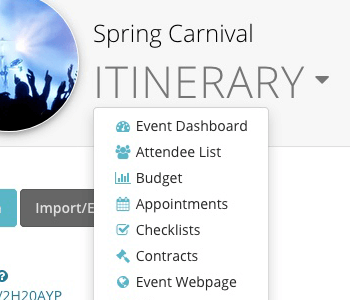
Gallery and museum management software is built to manage artifacts, collections and memberships but often falls short in handling events. Our Web-based system is built specifically for venues to track every event detail, from reservations and schedules to vendors, billing and communications.
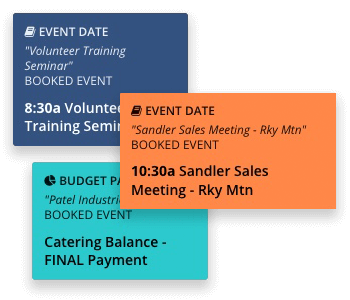
Always know at-a-glance your resource and event bookings and never double-book an event with our online venue and museum scheduling software tools. Syncable booking calendars and shareable event planning tools simplify managing events for your whole staff.
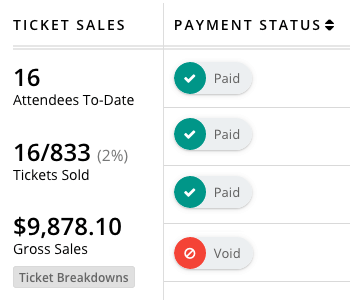
With our gallery and museum ticketing software tools, you can do everything from collecting free or paid registrations and RSVPs to managing orders and checking in attendees at the door. Perfect for public, private and member-only events.
See why more event professionals rely on our tools to streamline their events!
See All Reviews
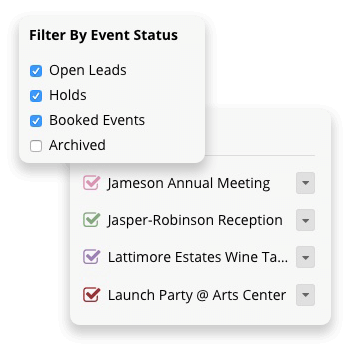
|
Full suite of event booking and business toolsWhether you are managing bookings for external clients or internal programs, our event scheduling software for museums and cultural centers makes sure every event booking, room reservation and appointment is at your fingertips. View space bookings with color-coded scheduling calendars. Create detailed quotes and proposals for events in minutes. Collect electronic signatures on contracts. Build and send out invoices and collect online credit card payments for event billings.

|
Track every single event detailSimplify how you store, organize and access event details as varied as food-and-beverage orders, headcounts, vendor assignments and sponsor/donor agreements. Track client and supplier details with a comprehensive event CRM system. Manage catering details, banquet event orders, F&B menus and rentals and track event budgets and costs. Create tasks for staff and vendors plus build detailed event timelines with assignments and reminders. Set up custom workflows and triggers to automate processes. And view it all with comprehensive event reports and at-a-glance dashboards . 
|
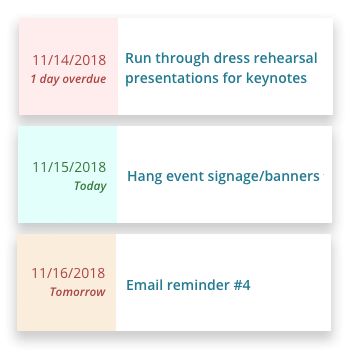
|
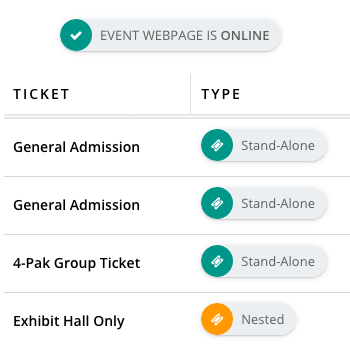
|
Attract attendees and sell ticketsOur gallery and museum software tools for events also includes full event registration and ticketing to manage your special events. Create event websites with custom registration forms for collecting RSVPs and attendee input like meal choices. Collect credit card registration payments and sell add-ons with online point-of-sale tools. Manage guest lists and orders with ease. Use our event check-in app with QR code compatibility to scan in guests at the door. |
Collaborate and communicate with staff and clientsGive your staff and departments a centralized place to communicate and share details with each other as well as customers, members, suppliers and volunteers with our cloud-based museum and art gallery management software. Consolidate your event email communications with a centralized inbox that works with your existing email addresses. Simplify how clients can view and sign documents, make payments, complete tasks, fill out forms and more by giving them access to an online client portal. Invite unlimited users into your account and control permissions to what they can view and edit. Access our mobile-friendly tools via the Web browser on any device - mobile phones, tablets, PCs and Macs. |
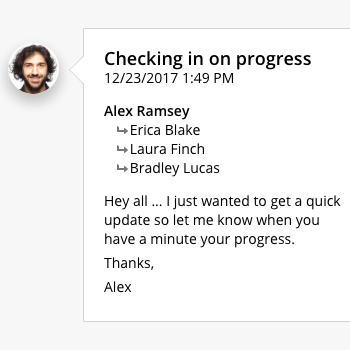
|
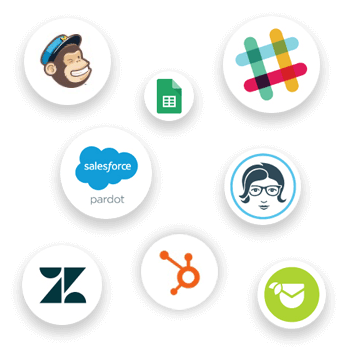
|
User friendly and integrates with other appsOur intuitive user interface and easy-to-use tools equal a short learning curve for you and your users. If you use other programs, our platform integrates with hundreds of other apps - like Quickbooks, Xero, Salesforce, Gmail/Google Docs and MailChimp - via the Zapier platform. You can easily customize your account with your logo and brand and create templates for proposals, contracts and more. And if you get stuck, we offer phone and email support plus training. |
The event venue management software tools for managing cultural centers have come a long way since the days of paper files and index cards. Presently, you have many options when it comes to museum and art gallery management software solutions and the types of functions that those solutions provide for you.
Although having multiple choices is good in the end, it does pose its own problem: which software platform (or platforms) will best suit the needs of your venue. Unfortunately, comparing gallery and museum software options can be a frustrating process because rarely are you comparing apples to apples. Some applications cover more operations-type functions (like membership and collections management) while others focus on additional streams of revenue (like event management).
In addition, you want to make sure that the solution(s) you choose is scalable so it will grow with you as your facility’s needs and offerings grow. And you also want to ensure that the solution you choose provides the most flexibility and security (i.e., ability to use on multiple devices, data backups and encryption, etc.).
Traditionally, museums have made a large share of their revenue from memberships, donations and at-the-door sales (tickets, merchandise, etc.). In recent decades, renting out space for events has also become an important source of revenue for cultural facilities, and this article will cover how to best find a solution to manage the details of that revenue stream.
But first, let’s look at the four main types of gallery and museum management software available today.
Selling individual and group tickets to visitors (whether they be members or not) and selling merchandise (like gift shop items) is a primary moneymaker for many museums, and software that manages this is usually one of the first (and sometimes oldest) software systems that cultural centers purchase. Such features can include ticketing setup, cash drawer integrations, and ticket printing and scanning, and applications that offer this include Doubleknot and Blackbaud.
Members and donors are the lifeblood of what museums and art galleries run on, and as such it is essential that you have an effective system in place to manage member CRM and profiles; member recruiting and retention; member applications; and member benefits like guest passes, discounts and member-only events. In addition, fundraising and donations are keep-the-lights-on sources of revenue and so having tools in place to manage things like prospect/donor research, planned giving, matching gifts, crowdfunding and charity auctions can be very useful. Examples of this type of software include Fonteva, OneCause, MobileCause, Salsa Labs, Giveffect, Fundly Pro and Double the Donation.
The assets your facility possesses are as vital as anything because they are the main attraction that drives people through your doors. As such, managing those assets is crucial to the operations of your venue, which is where collections management software is of value. This can help you streamline how you track accessions or acquisitions; collections; exhibitions; conditions of assets; and loans. In addition, such software can assist in helping you digitize your collections for online management, tracking and access of archived information. Such platforms include PastPerfect and Gallery Systems.
This type of gallery and museum event management software enables you to manage your facility for rental by outside customers for special events (like meetings, weddings, corporate events, banquets, galas and receptions) and for internal usage for programming and events you plan yourselves (like lectures, classes, symposiums, camps, special exhibits and group tours). These applications include Planning Pod and Priava.
Although some of the first three types of museum and art gallery software applications do offer some event management tools, often their strengths lie in those specific areas and not as much in true event planning. As such, here are the things you should look for in a solid event management software for museums and galleries.
Having a robust set of gallery and museum scheduling software tools at your disposal is a must if you are booking external and internal events at your facility.
These features should allow you to manage event bookings for rooms and spaces as well as provide you with an at-a-glance event scheduling calendar for viewing facility availability as well as ensuring that you don’t double book events. In addition, these tools can allow you to add and track group reservations, facility tours and appointments for leads and walk-throughs.
Many cultural facilities plan and promote events like lectures, concerts and exhibitions for the general public and/or members, and museum and art gallery software for events can offer a full set of RSVP, registration and ticketing tools for collecting payments and registration information from attendees.
Other features to look for can include email invitations and marketing tools for reaching out to prospective attendees; event websites and Web-based registration forms for easily collecting registrations and online payments; and event check-in apps for minimizing lines at the door and scanning in ticketed guests.
Here is where event-centric gallery and museum management software systems can really be a huge asset in streamlining your events business because these features can give you the ability to track all sorts of details like headcounts, rentals and A/V equipment reservations. Also, if you offer on-site catering or contract with off-site caterers, these systems can also provide tools for tracking and billing food-and beverage items and orders as well as the ability to generate banquet event orders for staff as well as F&B menus to show clients
In addition, having a client CRM tracking tool can let you manage leads, client contact information and client communications in one convenient place. Managing volunteers as well as tracking inventory or resource allocations are additional functions available in some event-specific applications. And you can use tools for managing sponsors, exhibitors, speakers and entertainment vendors for your own events or provide them to your clients as a value-add for managing their events.
Whether you have a small staff or dozens of team members and volunteers, managing everyone’s assignments and responsibilities can be an imposing challenge. Luckily many event platforms give you tools like shared calendars and task managers for tracking assigned tasks and automating email and text reminders that are sent out to your team. An added plus is any software that offers email communications tools for integrating with your current email addresses or platform.
Also, online shared tools and comprehensive dashboards make it easier for team members across the organization in different departments to view the status of every event. And with forms and surveys, you can collect event insights and ideas from staff as well as from your members and potential attendees.
Last but certainly not least are tools for managing the business end of your events (and by business end, we mean sales, marketing and financials). These include features for managing proposals and quotes; legal contracts and signatures; billing and invoicing; and online credit card payments. Some applications may also provide tools for tracking budgets and financials as well as for email marketing and social media profile management.
At the end of the day, any museum or art gallery management software platform must align with the needs of your institution, and so conducting your due diligence in reviewing applications is vital in finding a platform that will serve you well in the years to come.